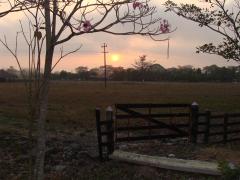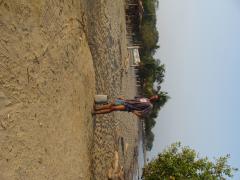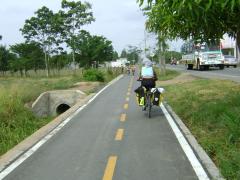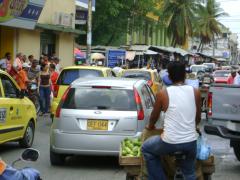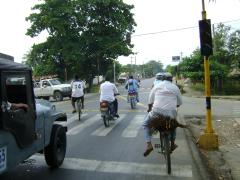Riding the lowlands of Colombia
If Columbia has always been a mystery to you as it has been to me let me give you a brief impression of our 3 day out ride. (yes, Nancy can be brief once in awhile)
Southwest of Cartagena along the coastal roads, it is the land of grazing hotland cows that are shiny gray and look like water buffaloes. The land is mostly dry and more dry with some huge trees spread out across the flatlands. Mostly is hot, hot and hotter. The temperature read 112 degrees fahrenheit as we rode (that was with the thermometer in the sun). The night cooled down to 86 degrees at 10:00 at night. Two hours after sunrise and two hours before sunset the sky is on fire with orange hazy humidity. The roads are great to ride, because on our backroads route there are more cyclists than cars, and many motorcycles, and a few buses, who all work well together sharing the highways and byways equally. It belongs to everyone. What a unique feeling to ride without the fear of being squashed. So far, we've had lots of respect from all motorized traffic. (We get back to the main highway in a couple of days. Hope our report is the same.) And people call us amigos instead of gringos.
Nearing Montería, we had a few miles of a beautiful bike path. It was absolutely glorious, with a marked section for cyclists and another whole section for walkers. I don't remember seeing anything like that in Central America!
Some small notes: All the way through Central America (except Costa Rica) the buses were mostly old US schoolbuses. In Guatemala and Honduras they weren't even repainted, and some even had the original school district still marked on them. Well, it apparently isn't worth it to get them to Colombia, as they've disappeared.
And it looks like the Darien Gap (between Panama and Colombia there's no road) had another effect, as there seem to be far less Evangelical Christians here. They were everywhere in Central America, a massive cultural force.
Finally, the wood haulers here are using burros instead of hauling the wood on their backs. We see lots of old men riding on top of loads of firewood on top of their burros. Seems a bit more civilized than the human burros of Guatemala.
All is well here, and people are great.

